Soft and fluffy dough fried to crispy golden perfection and rolled in cinnamon sugar. These are the perfect twisted donuts, a staple at any Asian bakery.
Jump to:
What are twisted donuts?
Twisted donuts or doughnuts are typically made from a yeast-raised dough and rolled in sugar. These donuts are a common sweet treat in many Asian countries and are called numerous names.
Whether it is mahua (麻花) from China, kkwabaegi (꽈배기) from Korea, shakoy from the Philippines, or sakubei (索餅) from Japan, they are the same delicious fried donut!
At times these can be made with glutinous rice flour for a chewy mochi-like variation. However, the most common version is made with regular flour. The result is super soft and fluffy donuts with a lightly crispy exterior, and a crunchy sugar coating.
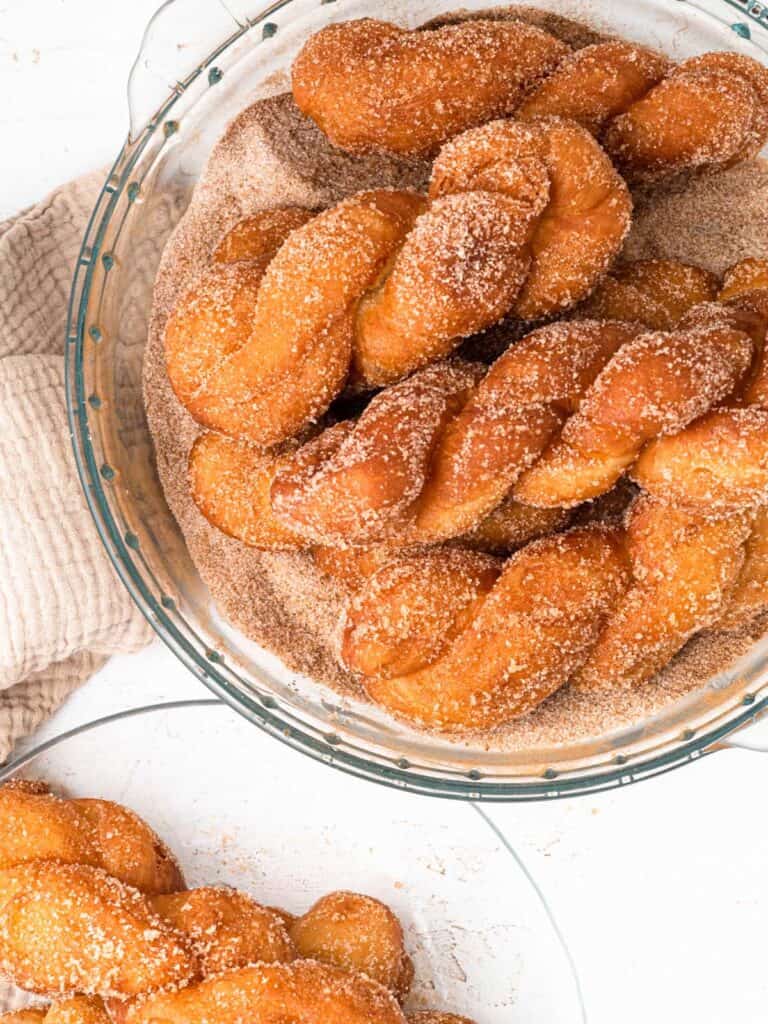
Tips for the perfect dough
The dough for these donuts is fairly simple, however, there are a couple of tips that can help you achieve the lightest and softest dough!
Make sure your yeast is alive
I use instant yeast in this recipe for a quick and easy dump and mix dough. If you keep yeast in your pantry for long periods of time it can lose its activity as the yeast cells begin to die. Make sure your yeast is active before starting the recipe.
You can test this by mixing it with some lukewarm milk or lukewarm water with a dash of sugar. If it is active you'll notice the liquid becoming foamy after 5-10 minutes.
If you want to use active dry yeast you can as well, but mix it into the water and milk and let it activate for 10-15 mins before adding it to the dry ingredients.
Use lukewarm water/milk
The temperature of your liquids is very important when making these. If the liquid isn't warm enough the yeast will take a lot longer to activate, and if the liquid is too hot it will kill the yeast.
The mixture of milk and water should be at blood-temperature, meaning the same temperature as your body. If you place your finger in the liquid you shouldn't be able to feel it.
This means that it is the same temperature a your blood and the perfect temperature for activating your yeast.
Mix until smooth
When you first mix your dough together it will be rough and slightly lumpy. As you continue to knead the dough it will become smoother and more elastic. This is the process in which gluten is developing.
Gluten is essential when making any kind of bread product as it is what gives it structure. If you don't develop gluten your donuts won't be able to rise to their full potential and will most likely turn out dense and oily.
You can check whether your dough is ready or not via the windowpane test. If you stretch the dough between your fingers, you should be able to stretch it into a thin sheet without tearing. The sheet of dough should be thin enough to pass light like a windowpane.
Let your dough rise
Make sure you give your dough enough time to rise. Once you've made your dough cover it in plastic wrap and let it double in size.
Once the dough has been shaped it should be proofed again. Let to rise until almost doubled.
You can check whether the dough is ready or not by lightly pressing it with your finger. The dough is ready if your finger leaves a dent that springs back slowly, leaving a small indent behind.
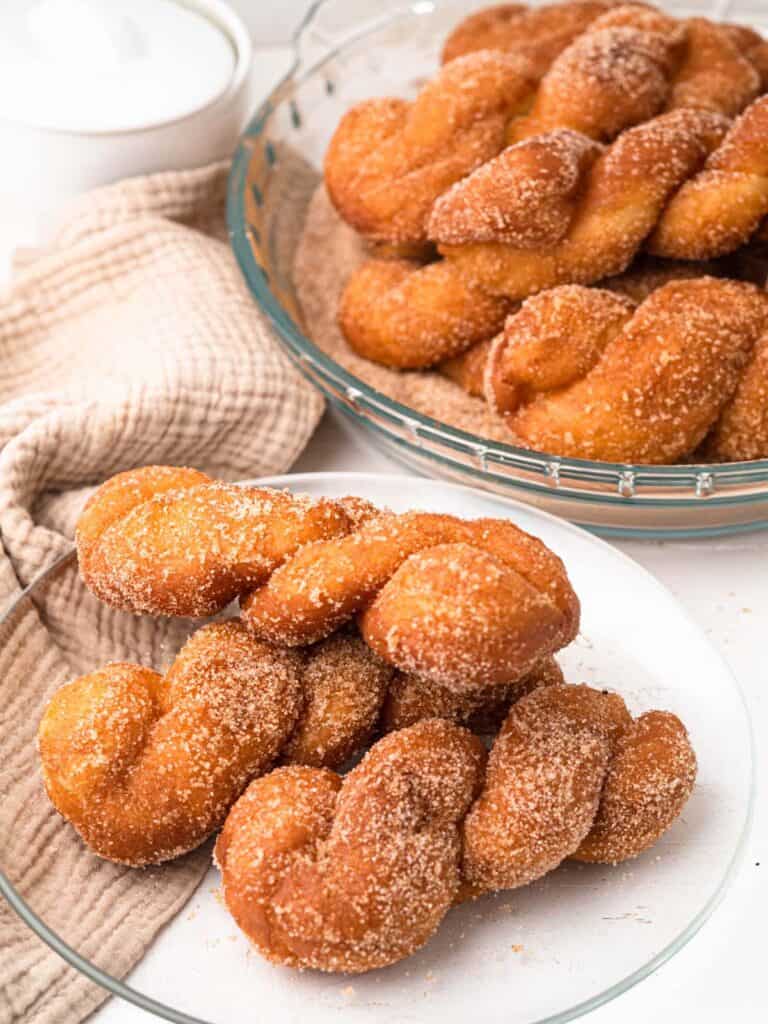
How to twist the dough
Since these are called twisted donuts, the dough should be twisted before frying!
The key to twisting the dough is rolling the two ends of a piece of dough in opposite directions. Roll one side of the dough away from you and the other towards you. This creates tension in the dough.
When you lift the twisted dough up by its two ends you'll notice that it turns by itself into that twisted shape. You can then give it a little assistance to form the perfect shape for twisted doughnuts.
If you want all your donuts to look the same make sure you divide the dough into 12 equal pieces. This ensures that the donuts turn out the same size with a similar number of swirls.
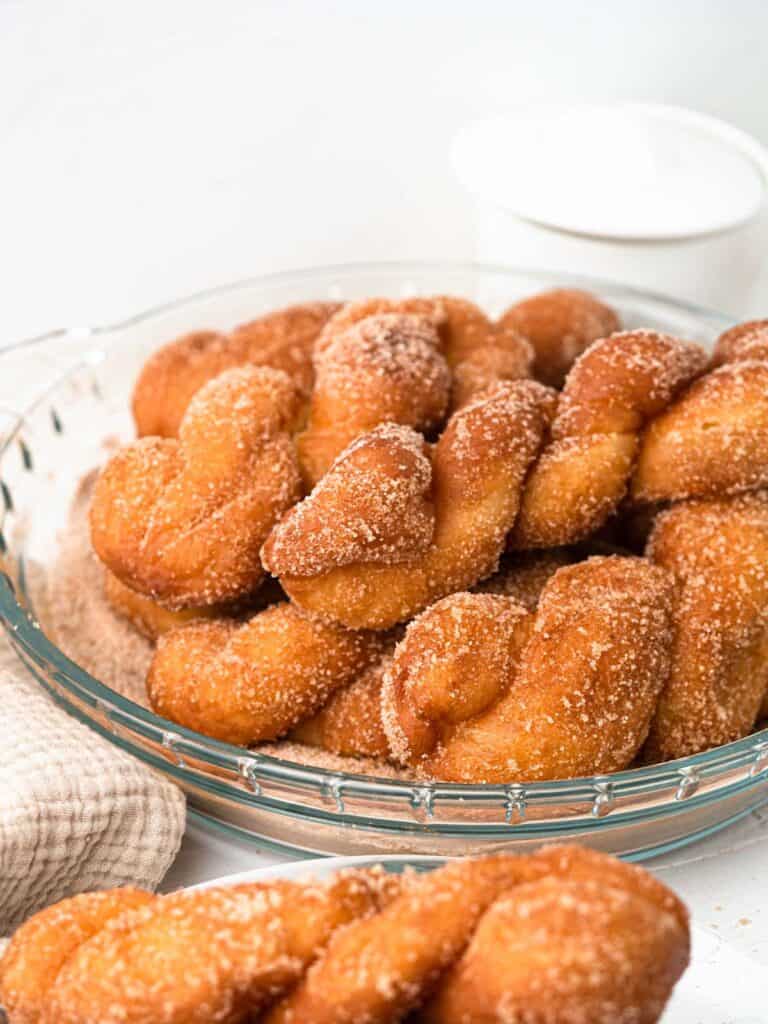
Tips for frying donuts
Donuts are all about frying! Here are a few tips to help you fry to golden brown perfection.
Transfer the donuts to the oil carefully
After you have proofed your donuts they will be full of air. This helps them fry up light and fluffy. If you move them into the oil too quickly or roughly you can release that air and cause your donuts to end up deflated and dense.
If you aren't sure of your ability to move them carefully you can cut the baking paper the donut has been proofing on into rectangles. Each donut should be sitting on a separate rectangle.
Lift the donut by lifting the edges of the baking paper and place the whole assembly into the oil. As the donut fries the baking paper will slide off and you can remove it.
Control the temperature
The optimal temperature at which you should be frying your donuts is 285F / 140C - 300F/150C. This way the dough will be cooked at the same time the exterior turns golden brown.
If the temperature is too high the exterior of the donut will fry faster than the inside, leaving it raw.
If the temperature is too low, the oil will begin to absorb into the dough, and you'll have a very oily donut.
I highly recommend using a thermometer, but if you don't have one you can check the temperature of the oil by frying a small piece of white bread. If the bread bubbles lightly and turns a light golden brown it's at the perfect temperature.
Make sure you adjust the temperature accordingly as you fry, adding donuts to the oil will lower the temperature of the oil. While the temperature will increase as you continue to fry all the donuts.
Drain the donuts on a wire rack or paper towel
Draining the donuts is very important as it will remove the excess oil. Excess oil can make the donut feel more greasy or soggy.
After you fry each donut place it on your wire rack or paper towel and let it drain as you fry your next batch.
Once you have fried all your batches roll them in cinnamon sugar. Draining the oil will prevent the sugar from forming clumps as the donut is rolled in it, giving it an even coat.
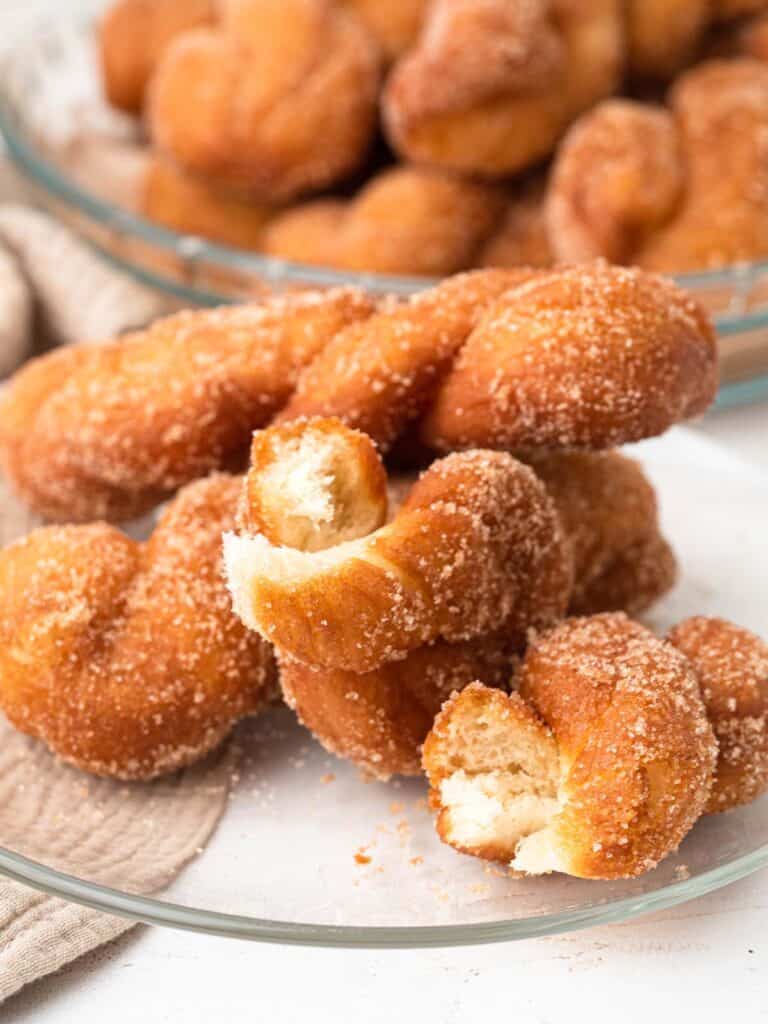
Frequently Asked Questions
How long do these last?
These will last up to 2 days at room temperature. However, I recommend eating them as soon as possible. They are the fluffiest and crunchiest when freshly fried so get them while they're hot!
How should I heat the leftovers?
I recommend heating leftover donuts in an air-fryer or oven before eating. As they sit they lose their crunchy exterior, but a quick reheat can bring them back to their former glory.
If you are strapped for time even a quick zap in the microwave can bring back their fluffy texture!
What if I don't have a thermometer?
I highly recommend using a thermometer when deep-frying, but you can also test the temperature of the oil with a small piece of white bread.
When you add the bread it should bubble lightly and slowly turn light golden brown.
If the oil is bubbling rapidly the oil is too hot, and if it doesn't bubble at all it is too cold.
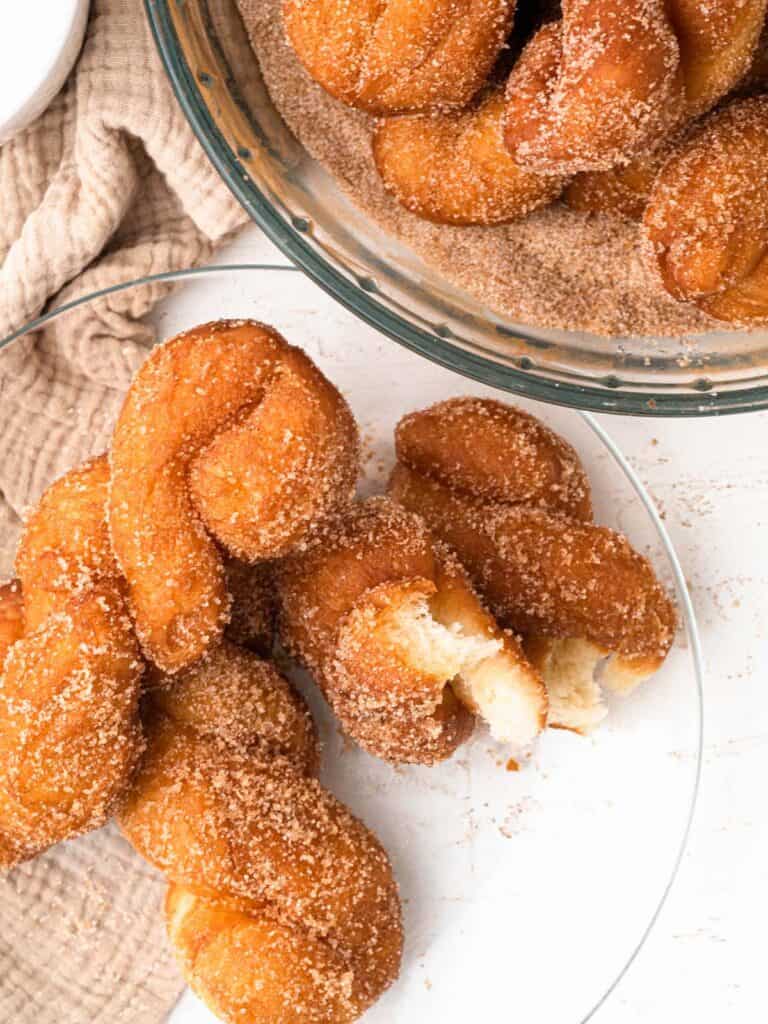
Why are my donuts dense?
There are a couple of reasons why your donuts turned out oily:
- The dough was under-proofed: The donut hadn't had enough time to build up air before being fried, resulting in a denser donut.
- The yeast wasn't active: If your yeast is old, or wasn't activated it won't add any air to your dough.
How come my donuts turned out oily?
There are a few reasons why your donuts may have turned out oily!
- The dough was over-proofed: This adds a lot of extra air that can't be supported, causing it to soak up more oil.
- The oil temperature was too low: The lower the temperature when you deep fry, the longer it takes for your donut to fry, giving it more time to absorb oil.
- The donuts weren't drained: Make sure you drain the excess oil from your donuts on a wire rack or paper towel.
Can I change the flavor?
Yes definitely! Feel free to change up the flavor by adding different flavorings to the sugar.
You can use vanilla sugar for vanilla donuts, freeze-dried fruit powder for something fruity, or even matcha powder for a match sugar coating.
You could even ditch the cinnamon sugar altogether and glaze the donuts with a mixture of icing sugar and water.
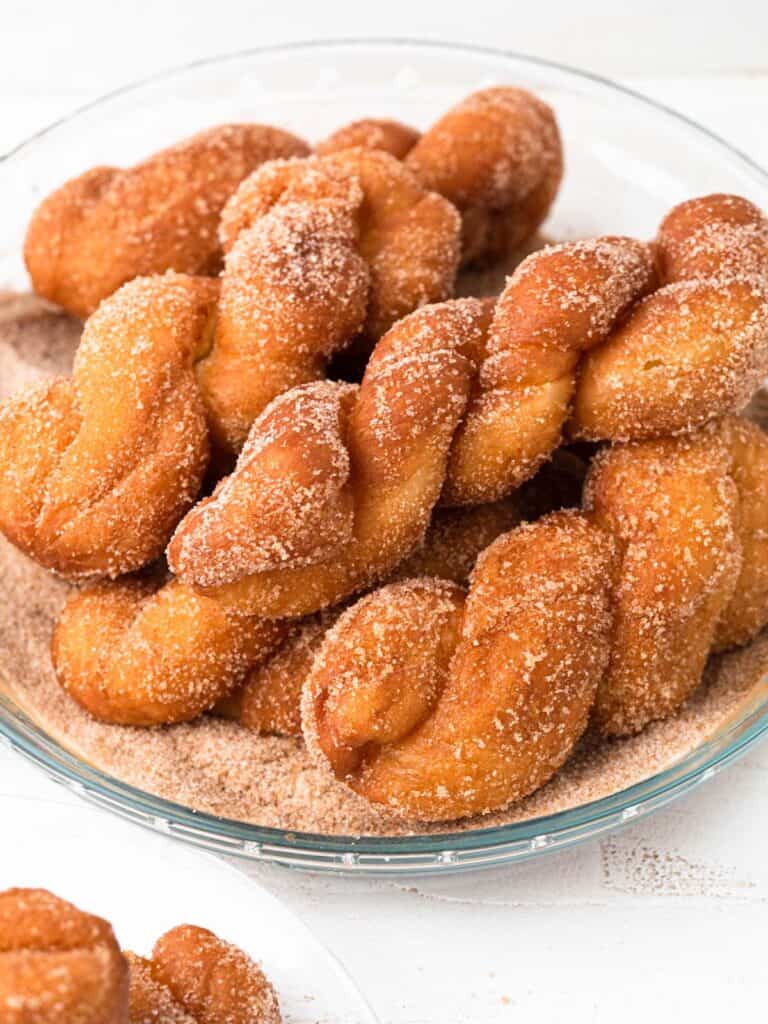
Let's Get Cooking
This is the perfect dessert when you have a craving for something sweet and deep-fried. Enjoy them with a cup of coffee or tea for the perfect snack.
This is a taste of my childhood and something I could never get sick of!
If you liked this recipe make sure to leave me a comment and rating down below, I would love to know how you went.
Also, don't forget to tag me on Instagram @catherine.desserts and hashtag #cattycakes so I can see and share your desserts. Follow me on Facebook, Pinterest, Youtube, and TikTok for more of my baking creations and updates! Until next time... happy caking!
PrintCinnamon Sugar Twisted Donut Recipe
Soft and fluffy dough fried to crispy golden perfection and rolled in cinnamon sugar. These are the perfect twisted donuts, a staple at any Asian bakery.
- Prep Time: 30 minutes
- Cook Time: 15 minutes
- Total Time: 45 minutes
- Yield: 12 donuts 1x
- Category: Donut
- Method: Intermediate
- Cuisine: Asian
Ingredients
Dough
- 400g All purpose flour (3 ⅓ cup)
- 125ml Lukewarm water
- 125ml Lukewarm milk
- 25g White sugar (2 tbsp)
- 8g Instant yeast (1 tbsp)
- Pinch of salt
- 45g Unsalted butter (3 tbsp)
- Neutral oil for frying
Cinnamon Sugar
- 200g White sugar (1 cup)
- 2 tsp Ground cinnamon
Instructions
Dough
- Combine the flour, sugar, instant yeast, and salt in the bowl of a stand mixer fitted with a dough hook
- Add the lukewarm milk and water and mix until smooth
- Add the butter and mix on medium speed until smooth and elastic, it will take up to 15 mins
- Place the dough in a large oiled bowl and cover with cling wrap
- Place in a warm place for 60 mins, or until doubled in size
- Remove from the bowl and roll into a large rectangle (approx 20cm x 30cm)
- Trim the edges and cut into 12 long strips
- Twist the two ends of a strip in opposing directions to build tension
- Lift the dough by the two ends and let it twist naturally, then tighten the twist with your hands to form the perfect shape
- Pinch the two ends of the dough together and place on a baking sheet lined with baking paper
- Cover with cling wrap to proof for 30 mins, or until almost doubled in size
- Bring a deep-fryer or heavy-bottomed pot of neutral frying oil to 280F / 140C - 300F/150C
- Carefully transfer 3 donuts to the oil and fry for 2-3 mins per side, or until golden brown
- Remove from the oil and drain on a wire rack or paper towel
- Repeat with the remaining donuts
- Combine the sugar and cinnamon in a shallow dish
- Add the drained donuts to the sugar and roll to coat
- Enjoy!

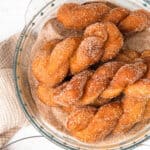
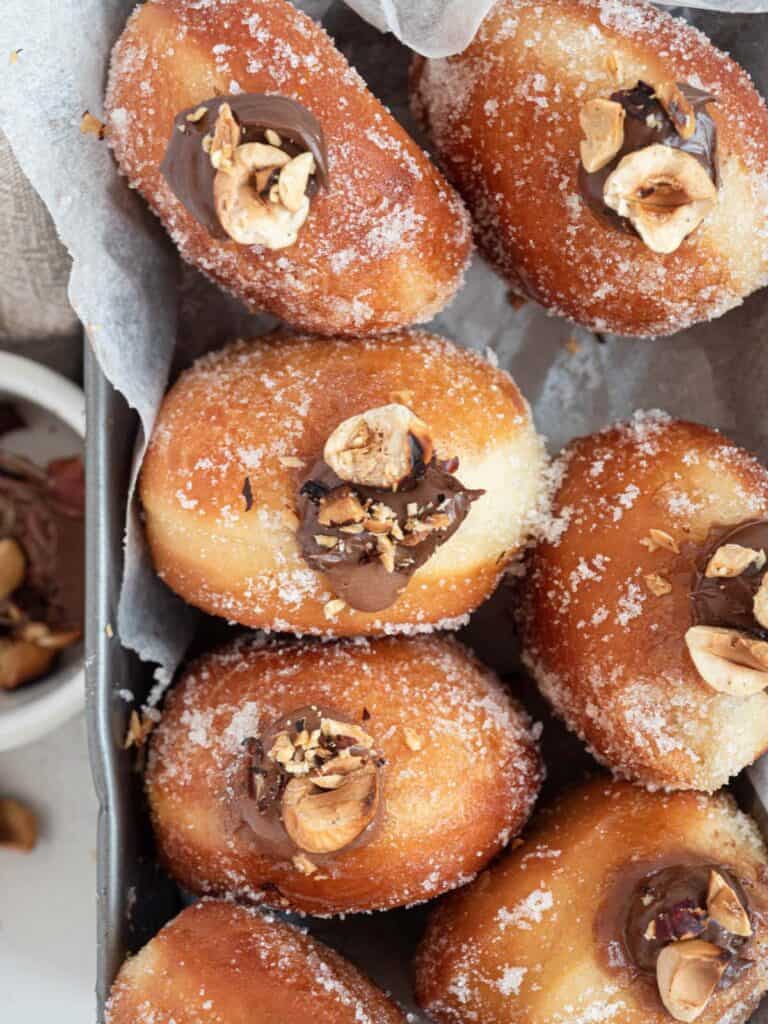
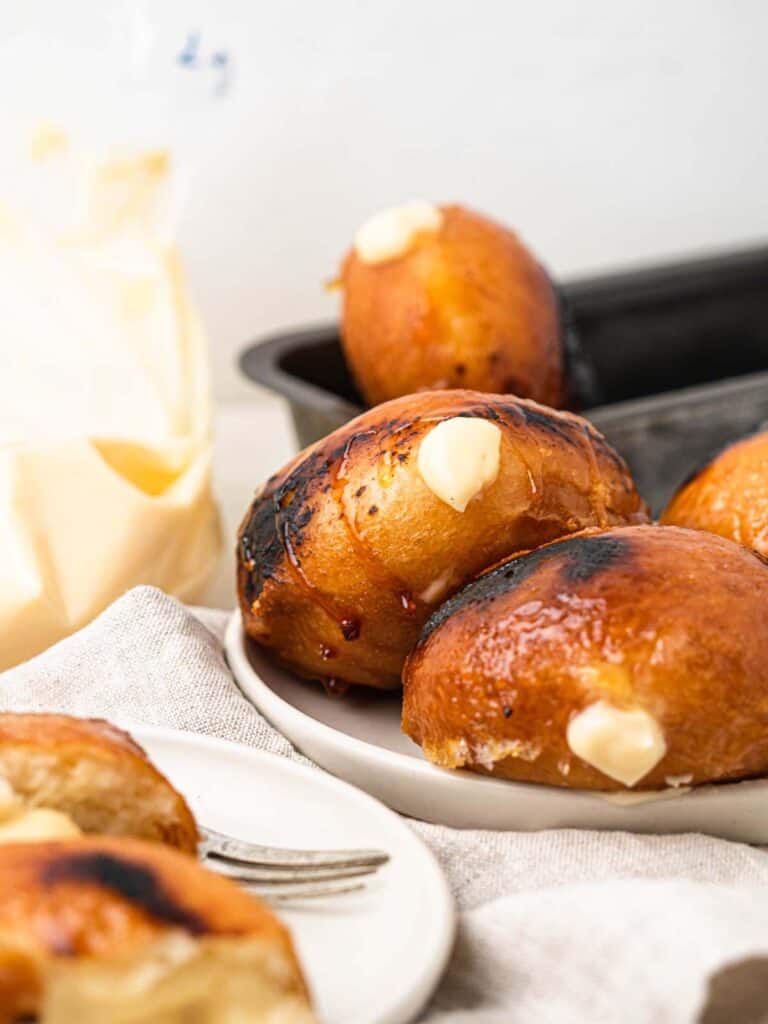
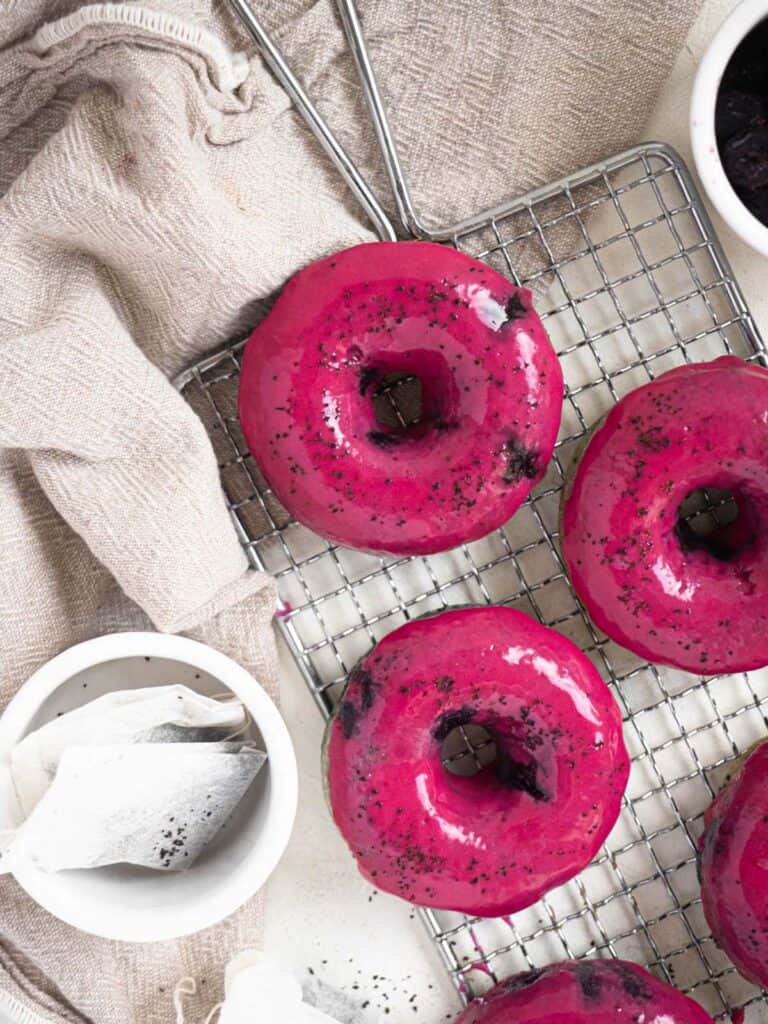
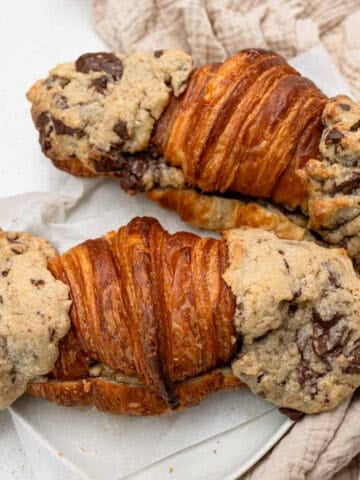


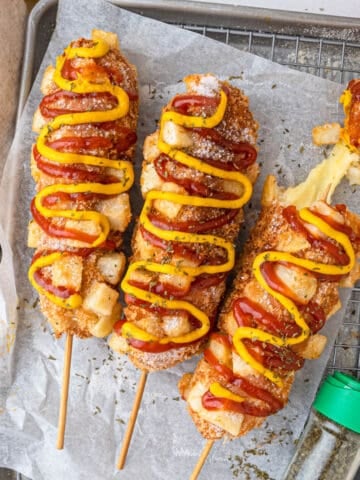
Felicia
I was so excited to try these doughnuts! They’re an absolute hit as the dough isn’t super sweet and the sugar coating adds just the right amount of sweetness.
Catherine Zhang
So glad you loved them 🙂